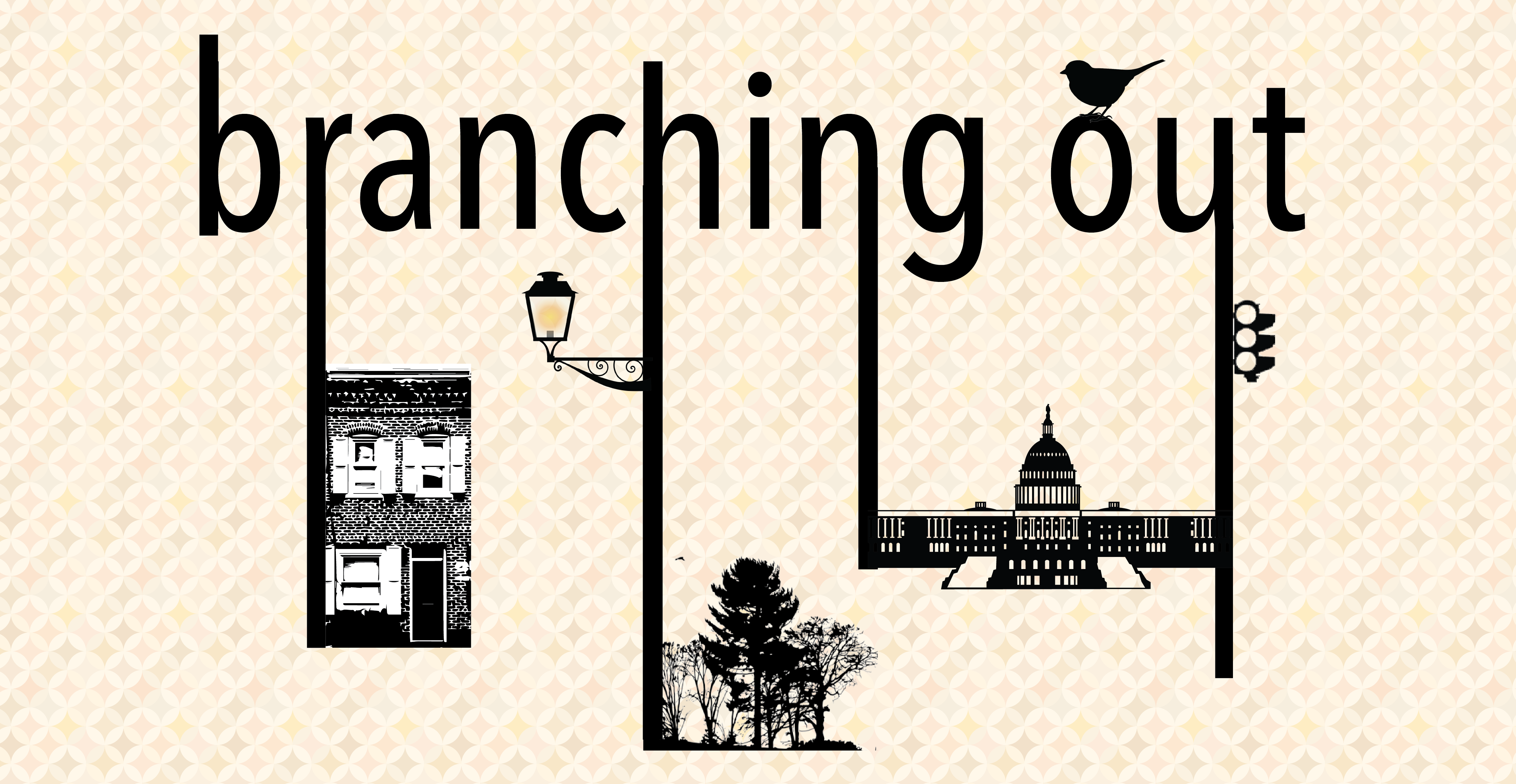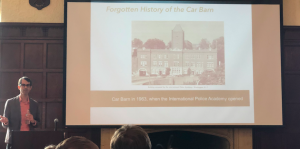As is the case with idiosyncrasies, a February thaw enables all kinds of strange behaviors. Enthusiasts of this ephemeral spring, uninhibited by unseemly “winter tans,” don shorts and t-shirts; the frisbee people hone their snow-dulled skills on the front lawn, and dogs, normally in such short supply, seem to grow from the green-brown earth itself. And myself, veritably suffocating in homework, find the time to lounge for a while in one of my favorite places in the District of Columbia: Dumbarton Oaks Park.
The park is a vision of tranquility, not more than 20 minutes from the front gates at the pace of the beleaguered student. I will refrain from describing it in great detail, if only because such a locale lends itself so well to individual experience. You may see a cardinal or two; you may find yourself in the middle of a herd of D.C. deer. You may be alone with trees. In any case, I guarantee the psychological equivalent of a full-body massage.
But why, in a column concerned primarily with history, politics, and social equity in the District, am I writing about 27 acres of grass and trees in Northwest D.C.? The most obvious answer is also the most personal: good greenspace is hard to come by, and too few people know about Dumbarton. Maybe that’s reason enough.
To be true, I am not in the habit of making recommendations without proper context. I am an armchair historian of the highest order—one of those endearing/enraging folks who looks at the past like a squirrel looks for its stash of nuts. There’s much more to Dumbarton than a fine piece of Earth. No garden but Eden is without history; no garden at all is without politics. This park has plenty of both. And it seems, owing both to its geographical proximity and its special place in my heart, the logical jumping-off point for a miniseries on D.C.’s public parks.
The entire Dumbarton property, according to the U.S. Department of the Interior’s Cultural Landscape Report, was populated by local indigenous peoples for thousands of years. Wisconsin Avenue, which abuts the park, was actually a Native American trail before it became Georgetown’s main thoroughfare during the days of the slave trade. A much larger tract of land, of which the current property was only a small part, was colonized and granted to the Second Lord Baltimore in 1632, but it was its second owner who gave the land its modern epithet: “The Rock of Dumbarton,” named for a castle in Scotland. As the Georgetown settlement grew, and land values in the area increased, parcels of the property were passed around among the region’s gentry. One of its first 19th century owners was Floride Calhoun, mother-in-law to the infamous senator, vice president, and rabidly pro-slavery secessionist John C. Calhoun. Dumbarton was the home he returned to after long days of defending the indefensible.
It was the property’s last private owners, Robert and Mildred Bliss, who commissioned the landscape projects that would become the Dumbarton Estate and Dumbarton Oaks Park. She was a Congressman’s daughter, art collector, and wealthy philanthropist; he was a high-ranking officer in the U.S. Foreign Service. Their choice of Beatrix Farrand as designer for the project was a controversial one. The first professional female landscape architect, Farrand achieved gardening celebrity during her lifetime, earning praise and ire in equal measure. Her most enduring work was Dumbarton Oaks, which she designed as a “naturalistic garden.” Essentially, it was imitation nature, pre-planned to harken back to the days before the colonization and commercialization of what is now Georgetown. By all accounts, she did a darn good job of it.
In 1940, the Blisses relinquished their estate, donating the mansion and its garden to Harvard University and Dumbarton Oaks Park to the National Park Service (NPS). For the remainder of the 20th century, funding limitations at the NPS led to the gradual deterioration of the “naturalistic gardens.” To combat this, the non-profit Dumbarton Oaks Park Conservancy was established. Funded by private donations, its mission then and today is the restoration and long-term maintenance of Dumbarton Oaks.
A fascinating history (to me, anyway), and a telling one. For what is it but a history of privilege? The privilege of the colonizer over the colonized, of the landed gentry over those without property, and of those with education and personal wealth over those without. What we now know as Dumbarton Oaks Park was created on land owned, for as long as it had been owned, by Washington’s elite; the park was commissioned at great personal expense by a wealthy Washington couple, and the architect herself, intrepid though she certainly was, came from a well-connected family. This park’s prehistory is imbued with race and class privilege.
All this would be moot if not for one essential fact: the park still exists, primarily, for wealthy white people. If you don’t believe me, look at any demographic map of Northwest D.C. Wedged as it is among some of D.C.’s wealthiest neighborhoods, Dumbarton Oaks breeds and feeds on high property values and wealthy visitors in a cyclical perpetuation of privilege, a privilege not enjoyed by all Washingtonians.
But aren’t there other parks in D.C., and don’t they also receive funding from the NPS? There are, and they do, but that funding is flatly inadequate, as it was for Dumbarton in days past. Note that private donations are what has spurred the recent restoration of Dumbarton Oaks. Money out of the pockets of neighbors, most of whom have the disposable income to support a lovely and local park. This is not the case elsewhere.
According to a report published by Resources for the Future, recent spending cuts for public lands have necessitated an increase in philanthropic private funding. Almost by definition, this creates funding inequities between wealthier and poorer neighborhoods, which means inequity in the quality of parks. “Philanthropy,” according to the report, “can create ‘haves’ and ‘have-nots’ across a park system.” When private spending begins to play a greater role in the maintenance of our parks, a disparity in park quality is bound to develop.
This is not to say that there aren’t a great many members of the D.C. community working hard to maintain and beautify all of D.C.’s parks. Community organizations dedicated to the preservation of public spaces, such as Washington Parks and People, are doing the important work of maintaining parks that do not benefit as much from private donations. I merely wish to remind us that when public spending on parks decreases, the nefarious inequalities that exist in D.C. and around the world begin to rear their ugly heads.
Thaws (and spring) are sweet because they alleviate a fundamental longing: for green, for warmth, and for sunshine. Too often we take for granted that we have a safe, clean, and well-maintained place in which to enjoy these great gifts. I urge you to visit Dumbarton Oaks Park, if the warm weather holds, but to do so with a critical eye. Observe, along with its wondrous ecological attributes, its troubling socioeconomic context. Only by informed engagement with the past can we begin to appreciate the systems and structures that perpetuate inequalities in this world. And only by informed engagement with the present can we begin to correct those inequalities.





